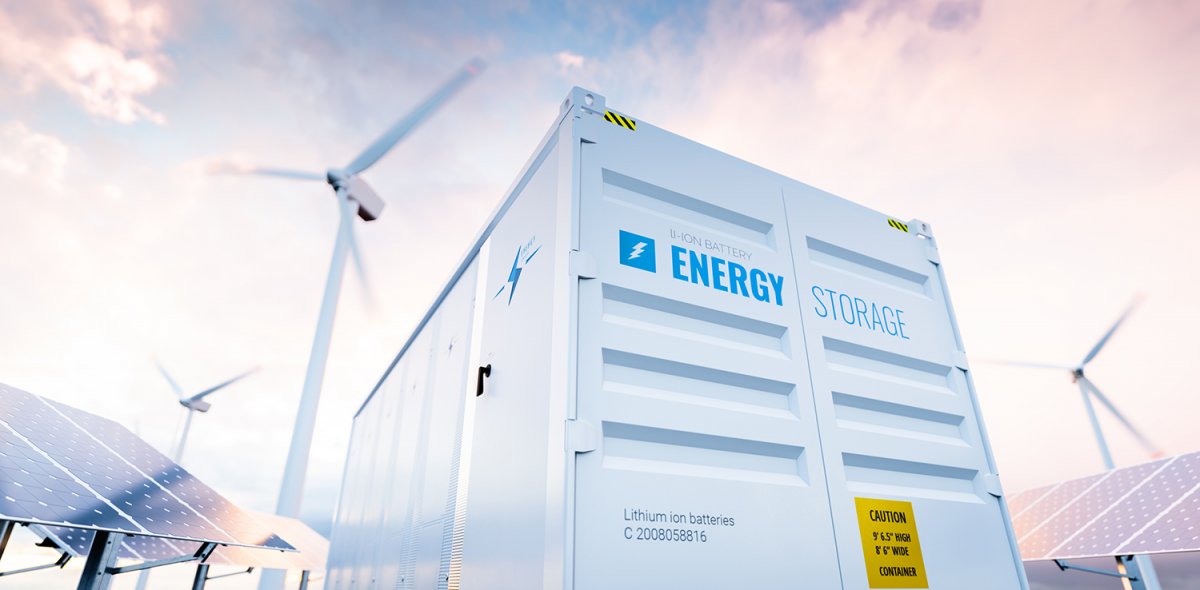CEEPR Working Paper 2021-005, March 2021
Ömer Karaduman

Energy storage is the capture of energy produced at one time for use at a later time. Without adequate energy storage, maintaining an electric grid’s stability requires equating electricity supply and demand at every moment. System Operators that operate deregulated electricity markets call up natural gas or oil-fired generators to balance the grid in case of short-run changes on either side. These peaker units are generally fast and flexible, but due to rapid adjustments in their heat rates, they are inefficient and emit high carbon levels. Production of Variable Renewable Energy (VRE) resources, such as wind and solar energy, exacerbates the gap between demand and supply due to their short-run variability in output. Energy storage presents a more efficient and environment-friendly alternative.
A grid-scale energy storage firm participates in the wholesale electricity market by buying and selling electricity. Energy storage creates private (profit) and social (consumer surplus, total welfare, carbon emissions) returns. Storage generates revenue by arbitraging inter-temporal electricity price differences. If storage is small, its production does not affect prices. However, when storage is large enough, it may increase prices when it buys and decreases prices when it sells. The price arbitrage transfers surplus between producers and consumers. The production of storage also shifts the production of electricity from peak periods to off-peak periods. The shift in production between generating units affects production costs and carbon emissions. Moreover, storing energy also allows increased utilization of available capacity for VRE when supply exceeds demand. Without storage, generation from these sources has to be curtailed. This research’s focus is also motivated by the rapidly decreasing cost of grid-scale batteries; the last decade saw a 70% reduction in lithium-ion battery packs’ price.
In my model, private returns to storage are maximized by trading on intra-day price fluctuations in the wholesale electricity market. In this research, I use South Australia Electricity Market data from 2017. In the observed period, generation in South Australia consists of almost half VRE and half gas-fired generators. This generation mix is the right candidate for an economically optimal low-carbon electricity production portfolio. It also produces some of the high price variability, which creates a favorable environment for energy storage. The high penetration level of VRE also creates a considerable variation in residual demand, which helps my model to recover firms’ best responses to storage’s production. I evaluate hypothetical energy storage’s private and social returns by estimating equilibrium strategies in the electricity market. I allow the decisions of grid-scale energy storage to affect prices.
My results suggest that accounting for the equilibrium effects of storage is important for understanding the market’s efficiency. This result holds even for a unit that is only 5% of the average daily capacity. This response occurs because storage activity changes thermal firms’ residual demand, and therefore, their market power. In the presence of energy storage, incumbent firms bid more aggressively; in other words, energy storage helps to mitigate market power in electricity markets. Accounting for generators’ best responses decreases the storage operator’s profit by 10% and increases consumer welfare by 10%.
Next, I ask whether the absence of grid-scale storage is socially inefficient at current costs. Due to high investment costs, entering the electricity market is not profitable for privately operated storage and won’t increase the total welfare. However, the storage-induced consumer surplus change is two times as large as the storage operator’s profit, and the combined benefits are higher than the investment cost. This difference in private and social returns makes investing in storage unprofitable but socially desirable, which presents an under-investment problem. Additionally, unlike the previous literature on storage’s emissions effect, I find that storage decreases emissions in markets like South Australia.
This under-investment problem suggests a public policy response, including the form of regulation that should be enacted. A hotly debated area is who should be able to own and operate storage units. I consider a load (consumer) owned energy storage. I find that it almost doubles the consumer surplus increase. This difference shows that price signals are not the right incentives to maximize social incentives because of the distortions in the market prices, such as market power.
Finally, I quantify the complementarity between VREs and grid-scale storage. I study the interaction between these technologies by assessing changes in their revenues as renewable generation is increased. At moderate levels of renewable power, when there is almost no curtailment for VREs, I find that introducing grid-scale storage to the system reduces renewable generators’ revenue by decreasing average and peak prices. This is the current situation in South Australia, and below that, in most electricity systems worldwide. However, when VRE capacity is doubled from this base, storage increases the return to renewable production and decreases carbon emissions by preventing curtailment. Higher VRE capacity also leads to higher revenue for energy storage due to an increase in price variation. This non-monotonic relation between VRE and energy storage investment returns leads to a need for more carefully designed policies that complement investments in renewables with encouraging energy storage.
References
Karaduman, Ömer (2021), “Economics of Grid-Scale Energy Storage in Wholesale Electricity Markets.” MIT CEEPR Working Paper 2021-005, March 2021.
Further Reading: CEEPR WP 2021-005



